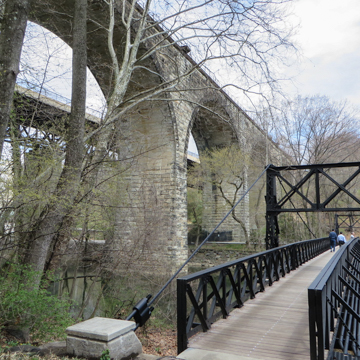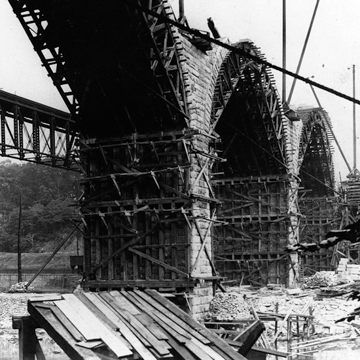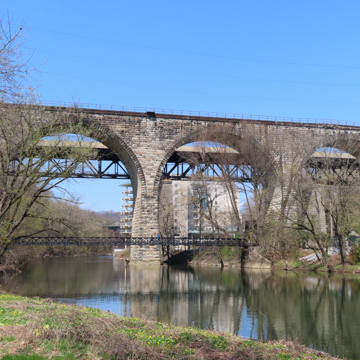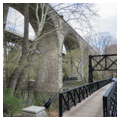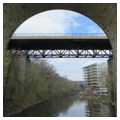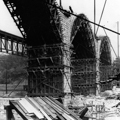You are here
CSX Railroad Bridge (Baltimore and Ohio Railroad Bridge)
Nationwide growth in railroading in the 1890s triggered, paradoxically, a revival of an ancient architectural type: the heavy masonry bridge, of which this is an awesome example (650 feet long, 115 feet high). Built by contractors C. A. Sims and Company of Baltimore, it supplanted the old Augustine Bridge just upstream and cut running time between Washington and New York by five minutes, its massiveness allowing trains to cross it safely at high speeds. There are seven arches in all, three of them of 100-foot span. Considerable concrete was used for foundations and for the core of the structure, which is faced with stone, half of which is buff sandstone from Berea, Ohio. Construction took only fourteen months, and just one workman was killed, by a falling bolt. The bridge remains in constant use by CSX Corporation trains today.
This scenic locale features three bridges close together. Augustine Bridge (1883–1885) stands to the north, originally a pin-connected Pratt-type deck truss nearly 1,000 feet long and 110 feet high that was converted to automobile use in 1920. Its rusted steel superstructure was entirely replaced in 1980, atop the original piers of blue rock from Brandywine Granite Quarry (BR24). Downstream is the diminutive Wire or Swinging Bridge (1910, restored 1975), a suspension span that gave workers access to Augustine Mills (BR21). Popular with Sunday strollers, it originally stood 100 feet further upstream until displaced by the B&O Bridge. Its form calls to mind a much earlier suspension span on the river, the short-lived but historic chain bridge at Market Street (1810). On the east bank stands the modernist W. Compton Mills Pumping Station (1959).
Writing Credits
If SAH Archipedia has been useful to you, please consider supporting it.
SAH Archipedia tells the story of the United States through its buildings, landscapes, and cities. This freely available resource empowers the public with authoritative knowledge that deepens their understanding and appreciation of the built environment. But the Society of Architectural Historians, which created SAH Archipedia with University of Virginia Press, needs your support to maintain the high-caliber research, writing, photography, cartography, editing, design, and programming that make SAH Archipedia a trusted online resource available to all who value the history of place, heritage tourism, and learning.







